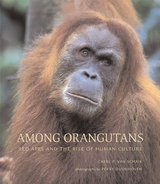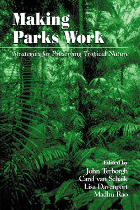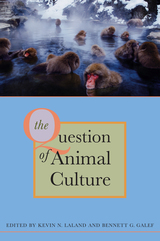
The local people know him as the "Man of the Forest," who refused to speak for fear of being put to work. And indeed the bear-like Sumatran orangutan, with his moon face, lanky arms, and shaggy red hair, does seem uncannily human; one of our closest relatives in the animal kingdom, the orangutan may have much to tell us about the origins of human intelligence, technology, and culture. In this book one of the world's leading experts on Sumatran orangutans, working in collaboration with nature photographer Perry van Duijnhoven, takes us deep into the disappearing world of these captivating primates.
In a narrative that is part adventure, part field journal, part call to conscience, Carel van Schaik introduces us to the colorful characters and complex lives of the orangutans who inhabit the vanishing forests of Sumatra. In compelling words and pictures, we come to know the personalities and temperaments of our primate cousins as they go about their days: building double-decker tree nests; using leaves as napkins, gloves, rain hats, and blankets, and sticks as backscratchers and probes; nurturing their infants longer and more intensely than any other nonhuman mammal. Here are the births and deaths, the first use of a tool, the defeat of a rival, the gradual loss of influence that, while fascinating to observe, may also help us to reconstruct human evolution.

For over 25 years, primatologists have speculated that intelligence, at least in monkeys and apes, evolved as an adaptation to the complicated social milieu of hard-won friendships and bitterly contested rivalries. Yet the Balkanization of animal research has prevented us from studying the same problem in other large-brained, long-lived animals, such as hyenas and elephants, bats and sperm whales. Social complexity turns out to be widespread indeed. For example, in many animal societies one individual's innovation, such as tool use or a hunting technique, may spread within the group, thus creating a distinct culture. As this collection of studies on a wide range of species shows, animals develop a great variety of traditions, which in turn affect fitness and survival.
The editors argue that future research into complex animal societies and intelligence will change the perception of animals as gene machines, programmed to act in particular ways and perhaps elevate them to a status much closer to our own. At a time when humans are perceived more biologically than ever before, and animals as more cultural, are we about to witness the dawn of a truly unified social science, one with a distinctly cross-specific perspective?

Most scientists and researchers working in tropical areas are convinced that parks and protected areas are the only real hope for saving land and biodiversity in those regions. Rather than giving up on parks that are foundering, ways must be found to strengthen them, and Making Parks Work offers a vital contribution to that effort. Focusing on the "good news" -- success stories from the front lines and what lessons can be taken from those stories -- the book gathers experiences and information from thirty leading conservationists into a guidebook of principles for effective management of protected areas. The book:
- offers a general overview of the status of protected areas worldwide
- presents case studies from Africa, Latin America, and Asia written by field researchers with long experience working in those areas
- analyzes a variety of problems that parks face and suggests policies and practices for coping with those problems
- explores the broad philosophical questions of conservation and how protected areas can -- and must -- resist the mounting pressures of an overcrowded world
Contributors include Mario Boza, Katrina Brandon, K. Ullas Karanth, Randall Kramer, Jeff Langholz, John F. Oates, Carlos A. Peres, Herman Rijksen, Nick Salafsky, Thomas T. Struhsaker, Patricia C. Wright, and others.

READERS
Browse our collection.
PUBLISHERS
See BiblioVault's publisher services.
STUDENT SERVICES
Files for college accessibility offices.
UChicago Accessibility Resources
home | accessibility | search | about | contact us
BiblioVault ® 2001 - 2024
The University of Chicago Press









